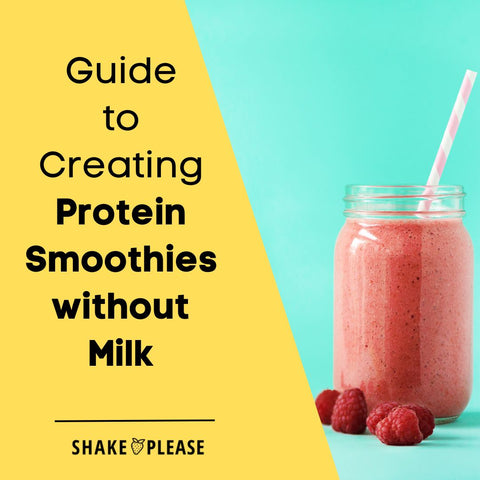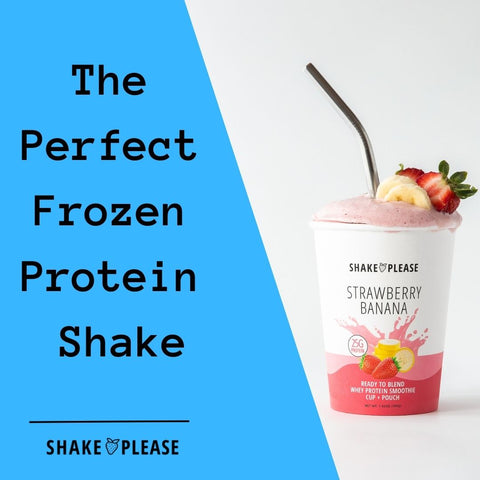
In recent years, protein smoothies without milk have gained immense popularity among health-conscious individuals. These delicious beverages not only provide a quick and convenient way to meet your protein needs, but they also offer a refreshing and satisfying treat.
For those who are lactose intolerant or follow a dairy-free lifestyle, finding alternatives to traditional milk-based protein smoothies can be a challenge.
That's where protein smoothies without milk come in. In this comprehensive guide, we will explore the benefits of choosing protein smoothies without milk, discuss alternative liquid options, highlight the best fruits for flavor and nutrition, suggest protein sources for dairy-free smoothies, provide tips on enhancing taste and nutritional value, offer guidelines for preparation and storage, and share some mouthwatering recipes.
Get ready to embrace the world of protein smoothies without milk and discover a whole new level of taste and nutrition!
Why choose protein smoothies without milk?
Protein smoothies without milk offer a myriad of benefits. Firstly, they cater to individuals who are lactose intolerant or have a dairy allergy, allowing them to enjoy the goodness of protein without any discomfort or adverse reactions.
Additionally, opting for milk-free alternatives can be a great way to reduce your overall consumption of animal products, making it a perfect choice for vegans or those following a plant-based diet.
Moreover, protein smoothies without milk tend to be lower in calories and saturated fat compared to their milk-based counterparts, making them a healthier option for weight management and cardiovascular health.
Finally, these smoothies provide a refreshing and light alternative that can be enjoyed by anyone looking to add variety to their protein intake.
Can you use water instead of milk for protein smoothies?
Yes, you can absolutely use water as a base for your protein smoothies. While milk provides a creamy texture and adds a touch of sweetness, water offers a neutral and refreshing base that allows other flavors to shine.
To enhance the texture of your smoothie, you can add ingredients such as frozen fruits, nut butters, or ice cubes.
Keep in mind that using water may result in a thinner consistency, so adjust the amount of water to achieve your desired thickness. Additionally, if you find the taste of water alone too bland, you can always experiment with alternative liquid options such as coconut water or almond milk, which we will discuss in more detail later.
The best fruits for protein smoothies without milk
When it comes to protein smoothies without milk, choosing the right fruits is crucial for both flavor and nutritional value.
Fruits not only provide natural sweetness but also offer a plethora of vitamins, minerals, and antioxidants.
Some excellent choices for protein smoothies without milk include berries, such as blueberries, strawberries, and raspberries, which are packed with antioxidants and add a burst of vibrant color to your smoothie. Tropical fruits like bananas, mangoes, and pineapples lend a creamy and tropical flavor profile to your drink.
Other popular options include peaches, pears, and apples, which provide a refreshing twist.
Experiment with different combinations of fruits to find your perfect blend, and don't be afraid to add a handful of leafy greens, such as spinach or kale, for an extra nutritional boost.
Benefits of protein smoothies without milk
Protein smoothies without milk offer a range of benefits that go beyond just satisfying your protein needs.
Firstly, they are highly versatile, allowing you to customize your drink based on your taste preferences and dietary requirements. With a wide variety of fruits, protein powders, and additional ingredients to choose from, the possibilities are endless.
Secondly, these smoothies are an excellent way to increase your daily intake of essential nutrients. By incorporating nutrient-dense fruits and vegetables, you can easily boost your vitamin, mineral, and fiber intake.
Furthermore, protein smoothies without milk are easily digestible, making them an ideal choice for pre or post-workout nourishment. They provide a quick and convenient source of energy, helping to replenish your muscles and aid in recovery.
Lastly, these smoothies can be a great option for weight management, as they are often lower in calories and fat compared to milk-based alternatives, while still keeping you feeling satisfied and full.
Protein sources for dairy-free smoothies
While milk is a common source of protein in traditional smoothies, there are plenty of alternatives for those who are looking to create protein smoothies without milk. One popular choice is whey protein isolate, which is derived from milk but has had the lactose and other components removed.
Whey protein isolate is highly bioavailable, meaning it is easily absorbed and utilized by the body. It comes in various flavors and can be a convenient and effective way to boost your protein intake. Another option is plant-based protein powders, such as pea, hemp, or brown rice protein.
These powders are derived from plant sources and offer a suitable alternative for vegans and those with dairy allergies. They provide a complete amino acid profile and can be just as effective in meeting your protein needs. Experiment with different protein powders to find the one that suits your tastes and dietary requirements.
Choosing the right non-dairy milk alternatives
If you prefer a creamier texture or are looking for additional flavor options for your protein smoothies without milk, non-dairy milk alternatives can be an excellent choice.
There is a wide range of options available, each with its own unique taste and nutritional profile.
One popular choice is almond milk, which offers a subtle nutty flavor and pairs well with a variety of fruits and protein powders. Coconut milk provides a creamy and tropical taste, adding richness to your smoothie. Soy milk is another versatile option that offers a creamy texture and is packed with protein.
For those who prefer a more neutral taste, oat milk or rice milk can be suitable alternatives. Consider your personal taste preferences and dietary needs when choosing a non-dairy milk alternative for your protein smoothies without milk.
Additional ingredients to enhance the taste and nutritional value
To take your protein smoothies without milk to the next level, consider incorporating additional ingredients that enhance both taste and nutritional value.
Nut butters, such as almond butter or peanut butter, add richness and a dose of healthy fats to your drink.
They also provide a creamy texture and a hint of nutty flavor. Greek yogurt or dairy-free yogurt alternatives can be added for a tangy taste and an extra protein boost. Chia seeds or flaxseeds offer a nutritional punch, providing omega-3 fatty acids, fiber, and antioxidants.
A handful of spinach or kale can add a vibrant green color and a boost of vitamins and minerals.
Don't be afraid to get creative and experiment with different combinations of ingredients to find your favorite flavor profile.
Preparing and storing protein smoothies without milk
Preparing protein smoothies without milk is a breeze. Simply gather your desired ingredients, such as fruits, protein powder, and additional add-ins, and add them to a blender.
If using frozen fruits, you may need to add a bit more liquid to achieve the desired consistency. Blend until smooth and creamy, adjusting the liquid as needed. Once blended, pour your protein smoothie into a glass or shaker bottle and enjoy immediately.
If you have leftover smoothie, you can store it in an airtight container in the refrigerator for up to 24 hours. However, keep in mind that the texture and taste may change slightly upon refrigeration. To make the most of your protein smoothie without milk, it is best to consume it fresh.
DISCOVER THE POWER OF A PROTEIN SMOOTHIE FOR LUNCH
Recipes for protein smoothies without milk
Berry Blast Smoothie
- 1 cup mixed berries (strawberries, blueberries, and raspberries)
- 1 scoop vanilla protein powder
- 1 tablespoon almond butter
- 1 cup water or almond milk
- Ice cubes (optional)
Instructions: In a blender, combine the mixed berries, protein powder, almond butter, and water or almond milk. Blend until smooth and creamy. Add ice cubes if desired for a refreshing chill. Pour into a glass and enjoy!
Tropical Paradise Smoothie
- 1 ripe banana
- 1 cup chopped mango
- 1 scoop coconut-flavored protein powder
- 1 cup coconut water or coconut milk
- Handful of spinach (optional)
Instructions: Place the banana, mango, protein powder, coconut water or coconut milk, and spinach (if using) into a blender. Blend until smooth and creamy. Pour into a glass and transport yourself to a tropical paradise!
Green Goddess Smoothie
- 1 cup spinach
- 1 ripe pear
- 1 scoop vanilla or unflavored protein powder
- 1 tablespoon chia seeds
- 1 cup water or oat milk
- Ice cubes (optional)
Instructions: In a blender, combine the spinach, pear, protein powder, chia seeds, and water or oat milk. Blend until smooth and creamy. Add ice cubes if desired. Pour into a glass and savor the goodness of this nutritious green goddess smoothie.
THE PERFECT FROZEN PROTEIN SHAKE
Conclusion
Protein smoothies without milk offer a fantastic option for individuals who are lactose intolerant, follow a dairy-free lifestyle, or simply want to try something different.
With a wide range of fruits, protein sources, and additional ingredients to choose from, you can create a variety of delicious and nutritious smoothies to suit your tastes and dietary needs.
Whether you prefer a fruity burst, a tropical twist, or a green goodness boost, protein smoothies without milk are sure to delight your taste buds while providing a nourishing and satisfying experience.
So, why not give them a try and embark on a delightful journey of flavor and nutrition?
Cheers to protein smoothies without milk!





